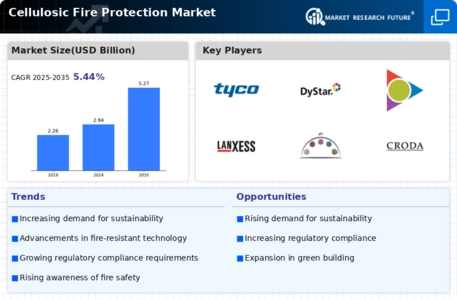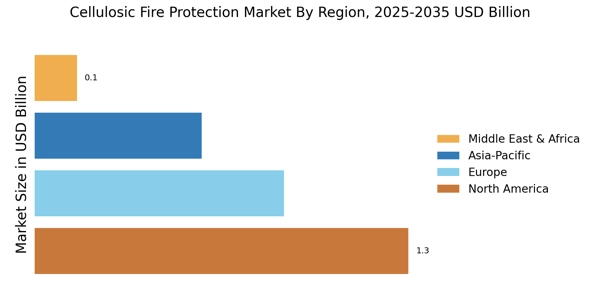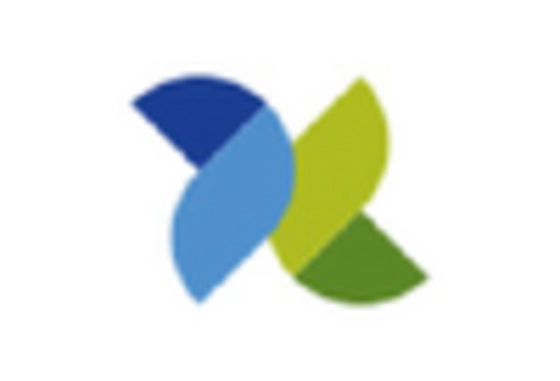Stringent Regulatory Standards
The implementation of stringent regulatory standards concerning fire safety is a crucial driver for the Cellulosic Fire Protection Market. Governments and regulatory bodies are increasingly mandating compliance with fire safety regulations, which necessitates the use of effective fire protection materials. This regulatory landscape compels industries to invest in cellulosic fire protection solutions that meet these standards. As a result, the market is expected to expand, with a projected increase in demand for compliant fire protection products. The Cellulosic Fire Protection Market is thus positioned to benefit from these regulatory requirements, as companies seek to adhere to safety protocols and avoid penalties.
Growing Construction Activities
The resurgence of construction activities across various sectors is likely to bolster the Cellulosic Fire Protection Market. As urbanization continues to rise, the demand for new buildings and infrastructure projects has increased significantly. This growth in construction is accompanied by a heightened focus on fire safety measures, leading to an increased adoption of cellulosic fire protection materials. The construction sector is projected to grow at a rate of 4.2% annually, further driving the need for effective fire protection solutions. Consequently, the Cellulosic Fire Protection Market stands to gain from the expanding construction landscape, as stakeholders prioritize safety in their projects.
Increased Awareness of Fire Safety
The rising awareness regarding fire safety among industries and consumers appears to be a pivotal driver for the Cellulosic Fire Protection Market. As organizations prioritize safety protocols, the demand for effective fire protection solutions has surged. This heightened awareness is reflected in the increasing investments in fire safety measures, with the market projected to grow at a compound annual growth rate of approximately 6.5% over the next five years. Companies are now more inclined to adopt cellulosic fire protection materials, which offer enhanced safety features. This trend indicates a shift towards prioritizing fire safety in construction and manufacturing sectors, thereby propelling the growth of the Cellulosic Fire Protection Market.
Sustainability and Eco-Friendly Solutions
The growing emphasis on sustainability and eco-friendly solutions is emerging as a key driver for the Cellulosic Fire Protection Market. As industries and consumers become more environmentally conscious, there is a marked shift towards using sustainable materials in fire protection. Cellulosic fire protection products, which are often derived from renewable resources, align with this trend. The market for sustainable fire protection solutions is expected to grow, as companies seek to reduce their environmental footprint while ensuring safety. This shift towards sustainability not only enhances the appeal of cellulosic fire protection materials but also positions the Cellulosic Fire Protection Market favorably in an increasingly eco-conscious marketplace.
Advancements in Fire Protection Technologies
Technological advancements in fire protection systems are significantly influencing the Cellulosic Fire Protection Market. Innovations such as smart fire detection systems and automated suppression technologies are becoming increasingly prevalent. These advancements not only improve the efficiency of fire protection measures but also enhance the overall safety of buildings and infrastructure. The integration of IoT and AI in fire safety solutions is expected to drive market growth, as these technologies allow for real-time monitoring and rapid response to fire incidents. As a result, the Cellulosic Fire Protection Market is likely to witness a surge in demand for advanced fire protection solutions that leverage these technologies.


















Leave a Comment